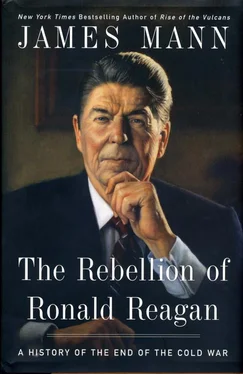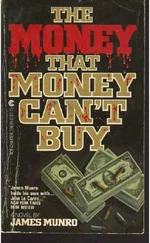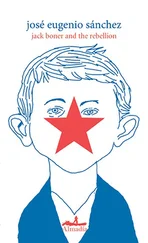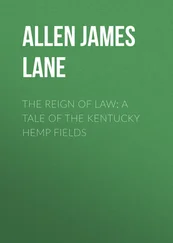In Berlin, Reagan had set forth what he had long believed about the Soviet Union. He had acknowledged the possibility that Gorbachev might represent a change, but had also voiced skepticism about how far Gorbachev would be willing to go. Having delivered his Berlin speech, Reagan was now in position for his final eighteen months of diplomacy with Gorbachev.
Ronald Reagan had a favorite line to explain why he did not go to summit meetings with Soviet leaders during his first term. “They keep dying on me,” he said. 1That was literally true; Reagan was obliged to deal with four Soviet leaders during his first fifty months in the White House. But as usual, Reagan’s quip was not the full story.
Reagan had written out by hand a letter to Soviet president Leonid Brezhnev in April 1981, during the period when he was recovering from the attempt by John W. Hinckley, Jr., to assassinate him. The president had also sent letters to Brezhnev’s two successors, Yuri Andropov and Konstantin Chernenko. However, none of this correspondence included any proposal for a meeting. Throughout Reagan’s first years in office, he had concentrated on rapidly increasing the U.S. arsenal of planes, warships, and other weaponry. In 1983, he asked his National Security Council for a detailed memo exploring the costs and benefits of a summit with Andropov, but many within his administration opposed such a meeting unless the Soviet Union would give something tangible in advance in exchange. Before the dispute could be resolved, the furor over the Soviet shooting of the Korean Airlines plane and Andropov’s own illness scuttled any possibility of a summit. 2
At the beginning of 1984, the lack of summitry became a political issue after Democratic presidential candidate Walter Mondale pointed out that Reagan might leave office as the first American president since Herbert Hoover to have failed to sit down with the leader of the Soviet Union. Reagan began thinking about the possibility of an election-year summit, seeking advice from everyone from Secretary of State George Shultz to his newly enlisted outside adviser, Suzanne Massie. “She reinforced my gut feeling that it’s time for me to personally meet with Chernenko,” Reagan recorded in his diary after talking with Massie. 3
Instead of a summit, however, Reagan deflected Mondale’s attacks in other ways. His speeches about the Soviet Union took on a more conciliatory tone. Reagan talked with Chinese leaders in Beijing. He met in Washington with Soviet foreign minister Andrei Gromyko. Even if Reagan had been willing to extend a summit invitation, the Soviets were in no mood to respond; they did not want to help him win a second term. Soviet leaders “would have liked to offer rhetorical assistance to the campaign of the Democratic candidate, Walter Mondale—not because they knew him, but because they preferred anybody to Reagan,” Anatoly Dobrynin, the Soviet ambassador to Washington, recalled. 4
Toward the end of the 1984 campaign, the Soviets recognized Reagan’s political strength and shifted ground. That fall, a Soviet official approached Thomas Simons, one of the State Department officials responsible for Soviet affairs, and suggested that Moscow could help the president win reelection. But it was too late. “The president doesn’t need your help,” Simons replied. I know, said the Soviet official regretfully. 5
After Reagan won reelection, summitry with the Soviet Union was on the agenda virtually from the start. Reagan had the political latitude of a president who would not have to run again and could focus on what he might accomplish before leaving office. For their part, Soviet leaders quickly recognized that Reagan would be in the White House for another four years, and that they would have to deal with him in some way.
The president was especially interested in high-profile summitry in Washington and Moscow. Reagan realized that a summit in which a Soviet leader came to the United States, or in which an American president traveled to the Soviet Union, carried political meaning well beyond any such meeting on neutral ground. Only two Soviet leaders had ever come to Washington: Nikita Khrushchev in 1959 and Leonid Brezhnev in 1973. Nixon had been the only American president to visit Moscow.
Reagan was also under increasing pressure from some of America’s closest allies to start meeting face-to-face with Soviet leaders. West German chancellor Helmut Kohl was particularly eager. The acrimony between Washington and Moscow during Reagan’s first term had prevented West Germany from developing the closer economic ties it sought with Eastern Europe. “Our main interest was to get the second Reagan administration back to a summit with the Soviets, because we had learned that [West] Germany’s room for maneuver was dramatically restricted by this stalemate between the two superpowers,” recalled Horst Teltschik, Kohl’s foreign-policy adviser. “We felt that when they started the summits, we would get a new chance to develop our relations with the Central Europeans.” 6
Kohl was the first Western European leader to visit the White House after Reagan’s reelection. On November 30, 1984, he persuaded Reagan to join with him in a statement that said the American president would be prepared for a summit with a Soviet leader at a “carefully prepared meeting.” 7The statement did not even mention the name of Chernenko, who by this time was terminally ill.
A few weeks later, Prime Minister Margaret Thatcher visited Camp David. She had just met in London with Gorbachev, then the rising star within the Politburo, who was already being viewed as a possible successor to Chernenko. During a speech in London, Gorbachev had talked about the possibility of reducing or even eliminating nuclear weapons. Thatcher had subsequently praised him in public, asserting that “we can do business together.” At Camp David, she told Reagan she thought Gorbachev was eager for change in Soviet policies. Reagan’s personal assistant, Jim Kuhn, later recalled that Thatcher’s early impressions of Gorbachev made a big impact upon Reagan. 8
When Chernenko died less than three months later and Gorbachev was chosen to succeed him, Reagan moved with surprising alacrity. On March 11, 1985, the same day the Politburo named Gorbachev as the next general secretary of the Communist Party, Reagan wrote him a private letter in which he said: “I would like to invite you to visit me in Washington at your earliest convenient opportunity…. I want you to know that I look forward to a meeting that could yield results of benefit to both our countries and to the international community as a whole.” 9This was, in a sense, merely a cordial note to a new Soviet leader, but the significance could not be overstated: it was also Reagan’s first proposal for a summit, after more than four years in the White House.
Gorbachev responded two weeks later saying he had a “positive attitude” toward Reagan’s suggestion for a meeting. Gorbachev refused, however, to commit himself to a trip to Washington. When Secretary of State George Shultz attempted a few weeks later to arrange a Washington summit, Soviet foreign minister Andrei Gromyko replied, “Not possible. We can find a European city.” 10
Even Reagan’s first two summits with Gorbachev, at Geneva in 1985 and Reykjavik in 1986, were viewed, at the time, merely as the forerunners to more important meetings in the United States and the Soviet Union. Indeed, the main tangible result of Reagan’s initial meeting with Gorbachev in Geneva was the announcement that the two leaders had formally agreed to a summit in Washington and a subsequent one in Moscow. The press corps was informed that Reagan had extended a formal invitation to Gorbachev to visit Washington as the two men stood outside, without advisers, in a parking lot near Lake Geneva; Gorbachev was said to have accepted on the spot, and in return, invited Reagan to his own capital city. This version of events was meant to convey to the world a sense of spontaneity and personal intimacy between the two leaders. The reality was that Reagan had worked out the plans for follow-on summits well in advance of Geneva through private negotiations in Washington with Dobrynin. 11
Читать дальше












